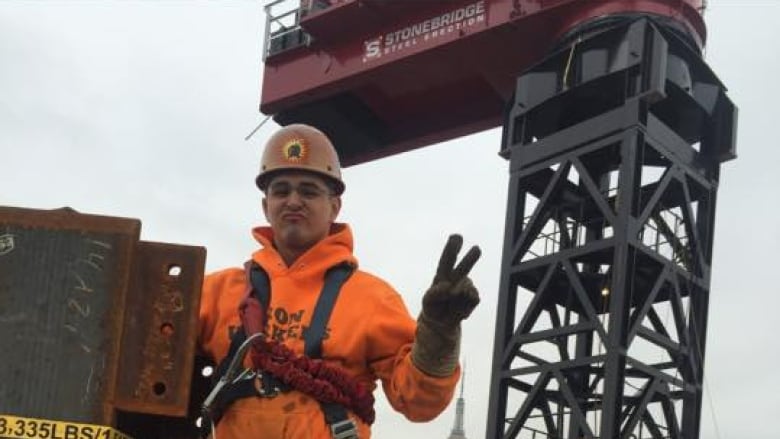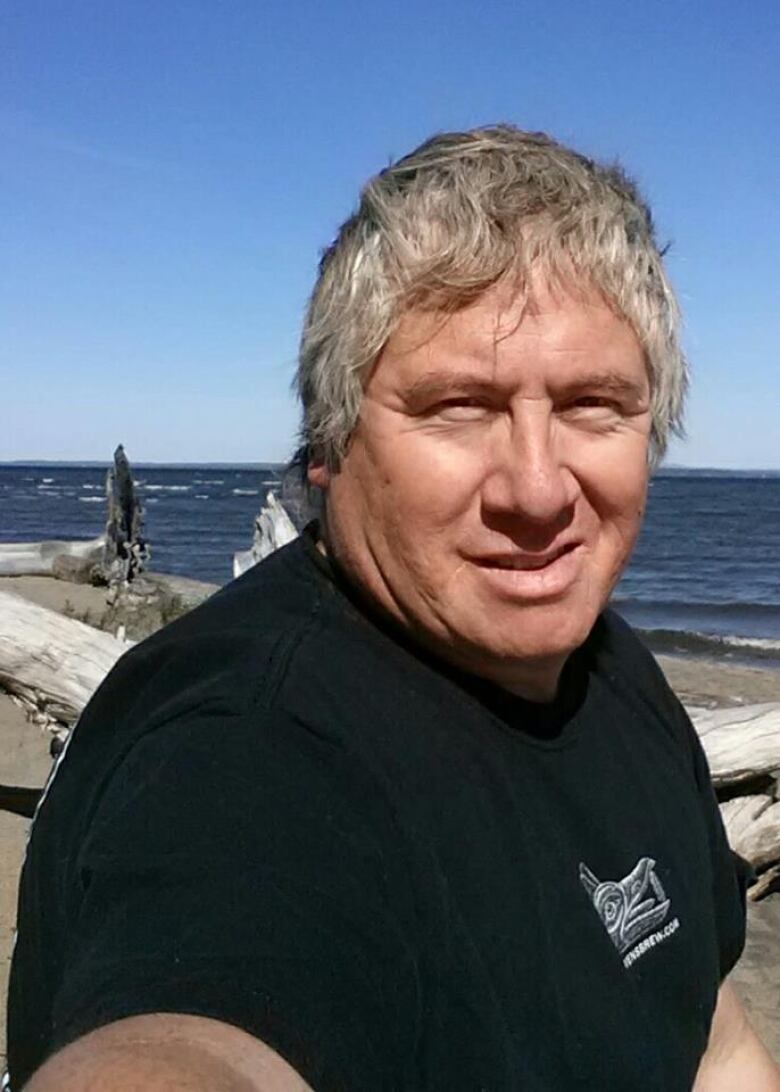Montreal's Champlain Bridge project brings Mohawk ironworkers closer to home
Massive infrastructure project sees Kahnawake Mohawks continue long ironworking tradition

Montreal's newChamplainBridge, which will span the St. Lawrence River and replace the existing bridge, is an enormous project. The$4.25-billion project began in 2015 and is expected to be completed by December of 2018, and already employs nearly 500 people.
And continuing a tradition that stretches back generations, a small but growing number of the ironworkers involved in the huge project are Mohawks from the nearby community of Kahnawake, on the south shore of the St. Lawrence River.
- New Champlain Bridge will be finished on time, minister promises
- TIMELINE | Champlain Bridge: From innovative to unsalvageable in 50 years
"We currently have close to 470 workers on the new Champlain Bridge corridor project and there will be close to 1,000 at its peak,"says Vronique Richard-Charrier, the media relations advisor for Signature on the Saint Lawrence, the consortium which is overseeing the project.
Joey Barnes is one of the 10 Mohawks who are among thosecurrently working on the bridge. He says he's doing the same thing people from his community, including close relatives, have been doing for generations, and he's helping to keep what he calls"a community tradition" going.
"I'm the part of the new generation," of ironworkers,he said.

Ironworkers from Kahnawake like Barnes often work across Canada and in the United States, where their skills are in demand.
When work slowed down last fall in New York City, the 23-year-old returned to Kahnawake and found work on the Champlain Bridge project. While the money isn't as good in Montreal as in the U.S, living 20 minutes away from the worksite is an advantage for him.
For now, he's close to his family, friends and his dog, Forest.
Jobtakes toll on community and family
For many Mohawks, becoming an ironworker is a tradition of necessity that stretches back more than 100 years. It was often the only way to make good money for community members, though that'sslowly changing.
Chester Gilbert is turning 60 this year and has been an ironworker for much of his adult life. He says there are still opportunities in ironwork for people willing to make a career out of it, even thoughthese days, many community members have found other ways to support their families.

"My father, both grandfathers, uncles, the guy across the street, my friend's fathers, it seemed like everyone needed to be an ironworker if they wanted to get ahead," Gilbert said.
He remembers being encouraged by his father to choose a different career. In the end, the money, being outside, working up in the air, and the freedom of choosing where to work attracted him, like many other Mohawks, to become an ironworker.
But the trade often means leaving the community for long periods of time, which Gilberthas done. After working in Fort McMurray, Alta., he returned to Quebec last year and has managed to remain in Kahnawake after finding a job working on the new bridge.
He says that working Monday to Fridayand being able to come home at night to his wife are important factors for him.
"One thing you see about ironworkers out on the road when you're booming out, there's a lot of broken families, broken marriages, stuff like that. So you're constantly reminded about what could happen to you if you don't take care of somebody back home."
Barnes has also heard stories about the challenges for ironworkers from Kahnawakewho have to travelaway from home to find jobs.
Although he is happy to be working on the bridge near his home, he still plans to go back to the States.
"Right now that I'm young, I'm trying to work as hard as I can before I have kids. Maybe I'll be financially comfortable enough that I don't have to go all the way to New York and work."
New generation, different outlooks
Gilbert says he appreciates being around the new generation of workers. He has noticed changes in attitudes towards work and family.
And as much as he passes on his experience to the young workers, he says he also benefits from their knowledge and outlook.
"They seem a lot wiser workwise in the sense of the long game. I've been doing this 25 years. My generation was like, they'll never live to 30 that type of attitude," he said.
"Many of my people are ironworkers," said Barnes, who said he knows all about the sacrifices ironworkers from his community have made.
"Now that I'm an ironworker, I just want to make sure I live up to the reputation."
'Ten years down the line, I can say to my kids and grandkids,I helped put that up.'- Ironworker Joey Barnes
He says that he wants to make sure the older workers can be proud of his work ethic.
Barnes and Gilbert take enormous pride in being ironworkers from Kahnawake and contributing to the new bridge. Representing the community on a structure that is expected to be around for another 125 years is important to both of them.
"I like thatit's starting from scratch, so 10 years down the line, I can say to my kids and grandkids,'I helped put that up,'" said Barnes.
Gilbert is also proud he'll be able to tell future generations he worked on the new bridge much like his father before himwas able to point to buildings he helped build in Montreal, like the Place Ville Marie.
And now, Gilbert's youngest son is following family tradition bytraining in Montreal to become an ironworker. For Gilbert, work on the new bridge not only brings him closer to his community it might also bring his family closer to his work.
"I'm looking forward to maybe working with [my son] before I retire. But I'm not retiring for another 10 years."












_(720p).jpg)


 OFFICIAL HD MUSIC VIDEO.jpg)
.jpg)



























































































